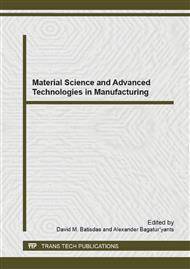p.3
p.8
p.12
p.17
p.23
p.27
p.32
p.36
Direct Immobilization of Glucose Oxidase on the Hydrophilic Copolymer Support Containing Oxirane
Abstract:
Glucose oxidase (GOD) (EC 1.1.3.4) is an oxido-reductase that catalyses the oxidation action of glucose to hydrogen peroxide and D-glucono-δ-lactone [. GOD is widely used in the determination of free glucose in body fluids, in vegetal raw material and in the food industry [. It also has many applications in biotechnologies, typically enzyme assays for biochemistry including biosensors in nanotechnologies. Free GOD will be denatured and inactivated rapidly due to its structural instability under extreme pH or temperature [. Four immobilizing methods, including physical adsorption, covalent binding, crosslinking and embedding methods, were used to improve their economic feasibility. Covalent binding combined active functional group monomers of carriers onto enzymes [4-. Researches showed that oxirane groups can react with-NH2 and-HS of enzymes under mild conditions so that the enzyme molecules were immobilized on the copolymer support containing oxirane [.
Info:
Periodical:
Pages:
17-22
Citation:
Online since:
January 2014
Authors:
Keywords:
Price:
Сopyright:
© 2014 Trans Tech Publications Ltd. All Rights Reserved
Share:
Citation:


